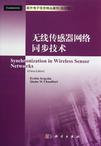无线传感器网络同步技术
出版时间:2011-6 出版社:科学出版社 作者:(美)塞佩丁 等著 页数:232
内容概要
无线传感器网络在民用与军用设备中有着广泛的应用。微传感器以无线互联的形式完成高度分散系统中的感应、计算、通信以及控制等工作。
塞佩丁编著的《无线传感器网络同步技术(影印版)》介绍了无线传感器网络部署中的一项最关键的技术:同步技术。本书概述了无线传感器网络中的时钟同步协议,着重讲解了导出高效时钟补偿评估方法以及运行评估指标等技术手段。《无线传感器网络同步技术(影印版)》适合电子信息专业、计算机专业的高年级本科生、研究生以及相关研究人员阅读。
作者简介
作者:(美国)Erchin Serpedin (美国)Qasim M.Chaaudhari
书籍目录
PREFACE page XI
1 INTRODUCTION page
1.1 Wireless Sensor Networks
1.2 Time Synchronization
1.3 Importance of Time Synchronization
1.4 History of Clock Synchronization
1.5 Outline
2 SIGNAL MODELS FOR TIME SYNCHRONIZATION page lO
2.1 Definition of Clock lo
2.2 Design Considerations
2.3 Delay Components in Timing Message Delivery
3 TIME SYNCHRONIZATION PROTOCOLS page
3.1 Pairwise Synchronization -
3.1.1 Timing-Sync Protocol for Sensor Networks
(TPSN)
3.1.2 Tiny-Sync and Mini-Sync
3.1.3 Reference Broadcast Synchronization
(RBS)
3.1.4 Flooding Time Synchronization Protocol
(FTSP)
3.2 Network-Wide Synchronization
3.2.1 Extension of TPSN
3.2.2 Lightweight Time Synchronization
(LTS)
3.2.3 Extension of RBS
3.2.4 Extension of FTSP
3.2.5 Pairwise Broadcast Synchronization
(PBS)
3.2.6 Time Diffusion Protocol (TDP)
3.2.7 Synchronous and Asynchronous Diffusion
Algorithms
3.2.8 Protocols Based on Pulse Transmissions
-
3.3 Adaptive Time Synchronization
3.3.1 Rate-Adaptive Time Synchronization
(RATS)
3.3.2 RBS-based Adaptive Clock
Synchronization
3.3.3 Adaptive Multi-Hop Time
Synchronization (AMTS)
4 FUNDAMENTAL APPROACHES TO TIME SYNCHRONIZATION page
4.1 Sender-Receiver Synchronization (SRS)
4.2 Receiver-Only Synchronization (ROS)
4.3 Receiver-Receiver Synchronization
(RRS)
4.4 COmparisons
5 MINIMUM VARIANCE UNBIASED ESTIMATION (MVUE)OF CLOCK OFFSET
page
5.1 The System Architecture -
5.2 Best Linear Unbiased Estimation Using Order
Statistics(BLUE-OS)
5.2.1 Symmetric Link Delays
5.2.2 Asymmetric Link Delays -
5.3 Minimum Variance Unbiased Estimation (MVUE)
5.3.1 Asymmetric Link Delays
5.3.2 Symmetric Link Delays
5.4 Explanatory Remarks
6 CLOCK OFFSET AND SKEW ESTIMATION page
6.1 Gaussian Delay Model
6.1.1 Maximum Likelihood (ML) Clock Offset
Estimation -
6.1.2 Cramer-Rao Lower Bound (CRLB) for Clock
Offset
6.1.3 Joint Maximum Likelihood Estimation (JMLE)
of Clock Offset and Skew
6.1.4 Cramer-Rao Lower Bound (CRLB) for Clock
Offset and Skew
6.2 Exponential Delay Model.
6.2.1 Cramer-Rao Lower Bound (CRLB) for Clock
Offset -
6.2.2 Joint Maximum Likelihood Estimation (JMLE)
of Clock Offsetand Skew
7 COMPUTATIONALLY SIMPLIFIED ScHEMEs FOR ESTIMATION OF CLOCK OFFSET
AND SKEW page
7.1 Using the First and the Last Data
Sample
7.1.1 Gaussian Delay Model
7.1.2 Exponential Delay Model
7.1.3 Combination of Clock Offset and Skew
Estimation
7.1.4 Simulation Results
7.2 Fitting the Line Between Two Points at Minimum Distance
Apart
7.2.I Simulation Results lol
7.2.2 Computational Complexity Comparison
lo
8 PAIRWISE BROADCAST SYNCHRONIZATION (PBS) - page lo
8.1 Synchronization for Single-Cluster Networks
lo
8.2 Comparisons and Analysis lo
8.3 Synchronization for Multi-Cluster Networks - lo
8.3.1 Network-Wide Pair Selection
Algorithm (NPA) lO
8.3.2 Group-Wise Pair Selection Algorithm
(GPA) - 1io
8.4 Comparisons and Analysis
9 ENERGY-EFFICIENT ESTIMATION OF CLOCK OFFSET FOR INACTIVE
NODES page
9.1 Problem Formulation
9.2 Maximum Likelihood Estimation (MLE)
9.3 Cramer-Rao Lower Bound (CRLB)
9.3.1 CRLB for the Clock Offset of Inactive Node
q
9.3.2 CRLB for the Clock Offset of Active Node
t'
9.4 Simulation Results
10 SOME IMPROVED AND GENERALIZED ESTIMATION SCHEMES FOR CLOCK
SYNCHRONIZATION OF INACTIVE NODES page
10.1 Asymmetric Exponential Link Delays
10.1.1 Best Linear Unbiased Estimation
Using Order Statistics (BLUE-OS)
10.1.2 Minimum Variance Unbiased Estimation
(MVUE)
10.1.3 Minimum Mean Square Error (MMSE)
Estimation
10.2 Symmetric Exponential Link Delays -
10.2.1 Best Linear Unbiased Estimation
Using Order Statistics(BLUE-OS)
10.2.2 Minimum Variance Unbiased
Estimation (MVUE)
10.2.3 Minimum Mean Square Error (MMSE)
Estimation
11 ADAPTIVE MULTI=HOP TIME SYNCHRONIZATION (AMTS) page
I
11.1 Main Ideas -
11.2 Level Discovery Phase
11.3 Synchronization Phase
11.4 Network Evaluation Phase 16o
11.4.1 Synchronization Mode Selection
16o
11.4.2 Determination of Synchronization
Period
11.4.3 Determination of the Number of
Beacons
11.4.4 Sequential Multi-Hop
Synchronization Algorithm (SMA)
11.5 Simulation Results -
12 CLOCK DRIFT ESTIMATION FOR ACHIEVING LONG-TERM SYNCHRONIZATION -
page
12.1 Problem Formulation 17o
12.2 The Estimation Procedure
13 JOINT SYNCHRONIZATION OF CLOCK OFFSET AND SKEW IN a
RECEIVER-REcEIVER PROTOCOL page
13.1 Modeling Assumptions
13.2 Joint Maximum Likelihood Estimation (JMLE)of the Offset
and Skew
13.3 Application of the Gibbs Sampler
13.4 Performance Bounds and Simulations
14 ROBUST ESTIMATION OF CLOCK OFFSET page
14.1 Problem Modeling and Objectives -
14.2 Gaussian Mixture Kalman Particle Filter
(GMKPF)
14.3 Testing the Performance of GMKPF -
14.4 Composite Particle Filtering (CPF) with Bootstrap
Sampling (BS)
14.5 Testing the Performance of CPF and CPF with
BS
15 CONCLUSIONS AND FUTURE DIRECTIONS page
ACRONYMS page
REFERENCES page
INDEX page
编辑推荐
SynchronizatiOn in Wireless Sensor Networks ·Wireless sensor networks have a huge number and range of applications.and criticalto their deployment is the process of synchronization presented in this book. ·The most important clock synchronization protocols are summarized.with emphasis on design and optimization techniques for building efficient clock offset estimation schemes and performance benchmarks.
图书封面
评论、评分、阅读与下载
用户评论 (总计4条)
- 这种专业的书很少,尤其是外文的,具有参考价值啊.
- 作为为数不多的讲述传感器网络特定技术的书籍,这本书确是难得的资源。希望能再多多引进这类及时反映学术前沿的影印书籍。
- 这么好书,关于某个方面专著很少呀,还是影印版,怎么没有人买呀!纳闷!
- 帮助留学生买的 还不错
